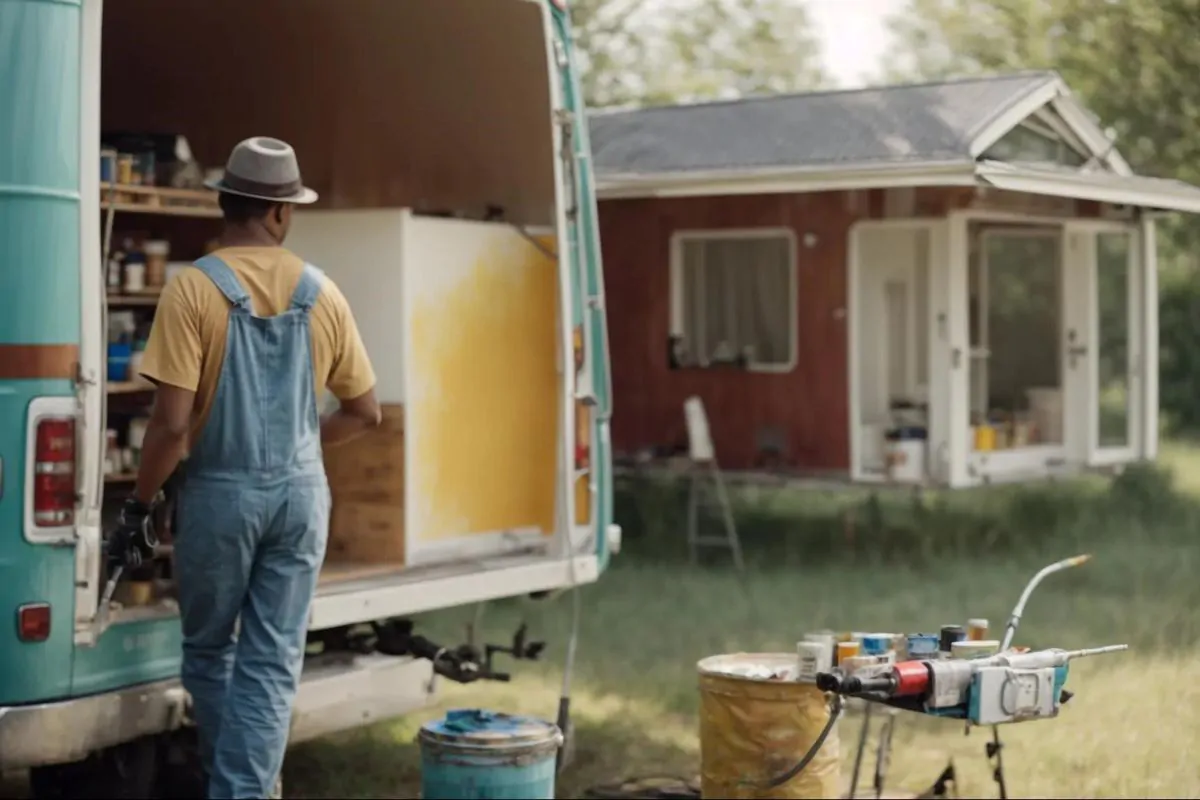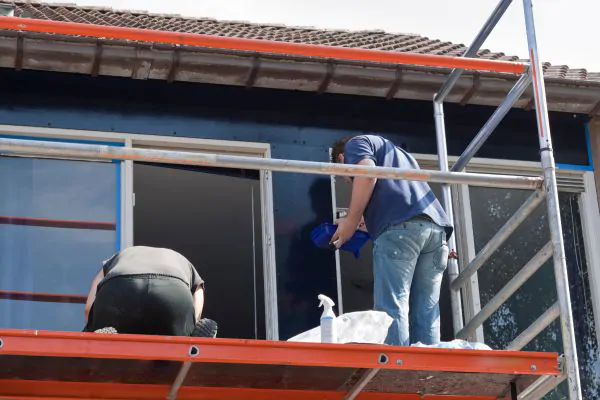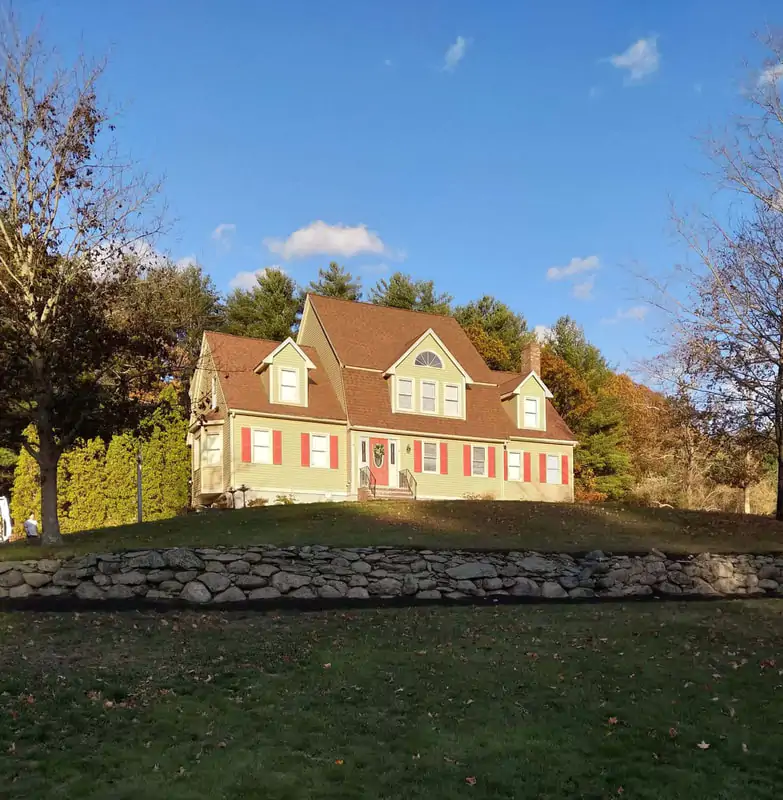Regarding home design, space is often at a premium, especially if you are dealing with smaller rooms. But did you know that the right paint choices can completely transform how a room feels? Learning how to make a room look bigger with paint is an easy, budget-friendly way to give your space a fresh, open look—no renovations required!
Whether you are trying to make your living room more inviting or add some visual depth to a small bedroom, paint can do wonders. By selecting the right colors and applying a few strategic techniques, you can create an airy, spacious atmosphere that feels much larger than it actually is.
In this article, we will explore various tips and tricks to help you maximize your space, from using light shades to clever accent walls. We will guide you through everything you need to know so you can give any room in your home a bigger, more open feel.
Key Takeaways
● Light colors and cool tones can make a room feel more spacious by reflecting light and creating an airy vibe.
● Opt for neutral or soft pastel shades as your base to enhance the room’s brightness and openness.
● Sticking to one color family creates a seamless look that makes a room feel more cohesive and more significant.
● Horizontal stripes make a room appear more comprehensive, while vertical stripes create the illusion of higher ceilings.
● Use bold, contrasting colors sparingly to create focal points without overwhelming the space.
● Mirrors reflect light and space, making any room appear bigger and brighter.
The Impact of Color on Perception
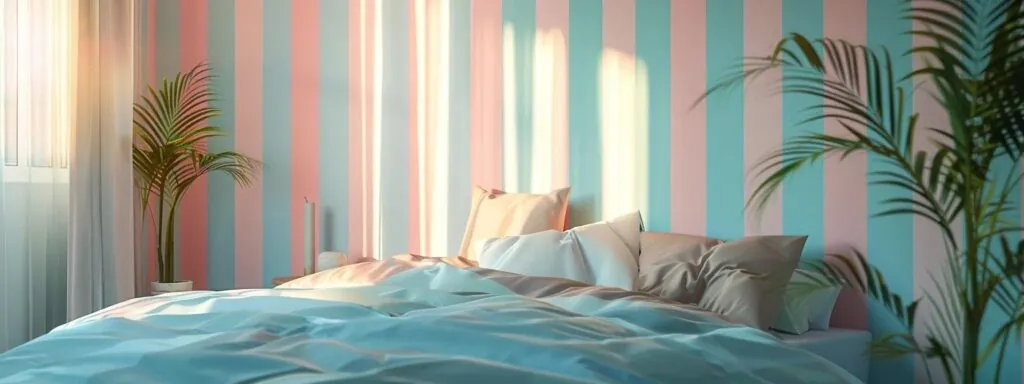
Color isn’t just about aesthetics; it’s a powerful tool that can dramatically change how we perceive space. The right colors can make a small room feel open and airy, while the wrong ones can make even a large room seem cramped.
Understanding how color affects perception is essential when figuring out how to make a room look bigger with paint. You can transform your space without moving a single wall by leveraging color psychology and optical illusions.
Choosing the Right Base Color
Selecting the perfect base color is the first step in creating the illusion of a larger room. Light, neutral shades like whites, creams, and soft pastels are your best friends here. These colors reflect natural light, brightening the room and making the walls seem to recede. This creates an airy, spacious feel that can make even the tiniest rooms appear larger.
On the other hand, dark colors tend to absorb light, making a room feel closed in and smaller than it is. So, if you are aiming for a more expansive look, stick to lighter hues.
It is important to understand the color theory and how combining colors in your design can help you maximize the impact on your home. Here is what you should know to get started:
- The Color Wheel
- Primary Colors: Red, Blue, Yellow
- Secondary Colors: Green, Orange, Purple (formed by mixing primary colors)
- Tertiary Colors: Red-Orange, Yellow-Green, etc. (created by mixing primary and secondary colors)
- Color Harmonies (Combinations)
- Monochromatic: Variations of a single color (e.g., light blue, navy, and sky blue)
- Analogous: Colors next to each other on the wheel (e.g., blue, teal, green)
- Complementary: Opposite colors (e.g., blue and orange) that create contrast
- Triadic: Three colors evenly spaced on the wheel (e.g., red, yellow, blue)
- Warm vs. Cool Colors
- Warm Colors: Reds, oranges, yellows—evoke warmth, energy, and passion
- Cool Colors: Blues, greens, purples—convey calmness, relaxation, and serenity
- Tints, Shades, and Tones
- Tint: A color mixed with white (lighter, softer)
- Shade: A color mixed with black (darker, moodier)
- Tone: A color mixed with grey (muted, sophisticated)
Must Read: The Perfect Combination of Colors for Your Interior
Techniques for Enhancing Space
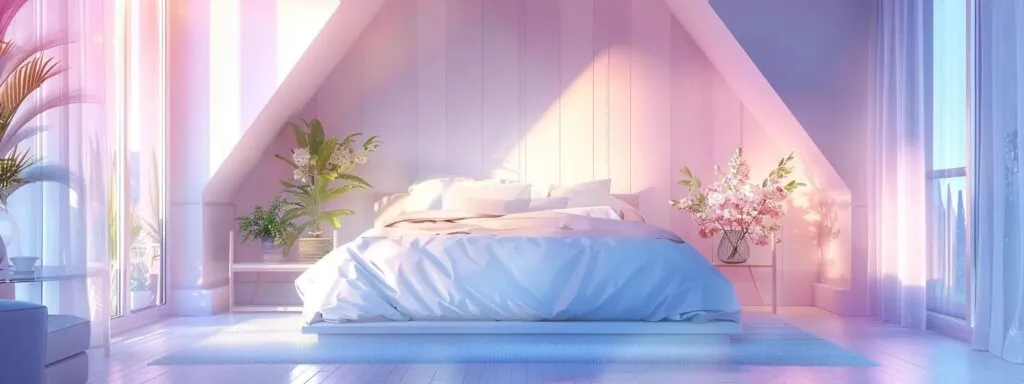
Once you have chosen the right base color, the next step is to apply specific techniques that further enhance the sense of space in a room. Simple strategies like using a monochromatic color scheme or adding stripes can create visual tricks that make a room appear larger than it is. These techniques manipulate the eye’s perception of depth, height, and width, giving the illusion of more space.
The Power of a Monochromatic Scheme
A monochromatic color scheme involves using varying shades of a single color throughout a room. This technique creates a seamless, unified look, which prevents harsh contrasts that could break up the space visually. When all elements—walls, furniture, and decor—stay within the same color family, the room appears more cohesive, which tricks the eye into seeing it as larger.
The subtle variations in shades add depth without cluttering the space, making it feel open and serene. Soft, neutral tones work particularly well in this approach, offering a clean and expansive feel throughout the room.
Horizontal and Vertical Stripes
Stripes are a clever way to manipulate a room’s dimensions. Horizontal stripes can make a room feel wider by drawing the eye across the space, creating the illusion of a broader area. Conversely, vertical stripes help make the ceilings feel taller by pulling the eye upward, giving the room more height.
Relates Post: Which to Choose – Paint versus Wallpaper
Whether through paint or wallpaper, adding stripes can completely transform the perception of a room’s size. Just be mindful of the stripe width—thinner stripes create a more subtle effect, while bold, wider stripes can make a bigger impact.
Strategic Use of Accent Colors
While lighter colors help expand a room visually, strategically placed accent colors can enhance the space by adding depth and personality. Accents can draw attention to specific areas without overwhelming the room, allowing you to create visual interest while maintaining an open feel.
Creating a Focal Point
An accent wall or a statement piece of furniture can serve as the focal point of a room, giving it depth and drawing the eye to a specific area. This technique works exceptionally well in small spaces, as it breaks up the monotony of a single color palette without closing in the room. For example, painting one wall a deeper shade from the same color family as your base color can add dimension, making the room feel larger.
Limit the Use of Dark Colors
While dark colors have their place in interior design, using them sparingly is crucial to make a room look bigger. Dark hues can make walls seem closer and absorb light, which can shrink the perception of space. To maintain an airy, open feel, reserve dark colors for small accents or specific elements like trims, furniture, or decor. This way, you get the boldness and contrast of darker tones without sacrificing the room’s spaciousness.
Conclusion
Proper paint techniques and strategic choices allow you to transform a small room into a more spacious and inviting environment. You can effectively create the illusion of space by understanding how color influences perception and applying methods like a monochromatic scheme or strategic use of accent colors. For more in-depth discussion on paint techniques and tips, visit our painter blog articles.
Finishing touches such as choosing the right paint finish and incorporating mirrors enhance this effect, making your room feel airy and open. Remember, it is all about balance—light, reflective colors combined with thoughtful accents can bring your vision to life. With these tips, you can confidently embark on your painting project and enjoy a larger, brighter, and more welcoming room.
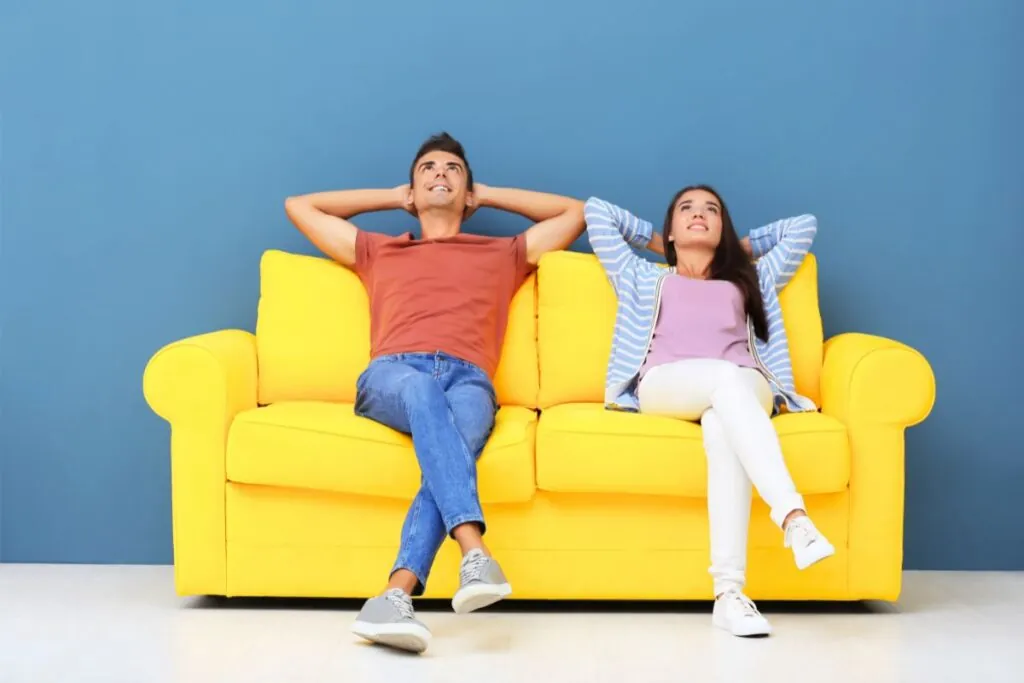
When designing a home, balancing personal preferences with color theory principles is essential. For example, someone who loves bold reds might incorporate them as accent pillows, rugs, or art, while keeping walls and furniture neutral to avoid overwhelming the space.
By applying these concepts, homeowners and designers can create spaces that are not only beautiful but also functional and mood-enhancing. Call Quality Preferred Painting today to get started with the perfect room painting project!
Frequently Asks Questions
How to paint a room so it feels bigger?
To make a room feel bigger, use light, neutral colors like whites, creams, and soft pastels. Painting walls and ceilings the same color can blur the edges, creating a more spacious feel. Also, use a semi-gloss or satin finish to reflect light and brighten the room.
Does painting a room all one color make it look bigger?
Yes, painting a room all one color makes it look bigger by creating a seamless, uninterrupted flow. Lighter shades work best as they reflect more light, enhancing the feeling of openness.
What paint color will make a room look bigger?
Light colors such as white, light gray, beige, pale blue, or soft pastels make a room look bigger. These shades reflect more light, giving the illusion of more space.
How do you paint a room to change size?
To make a room feel larger, paint with light colors and consider using the same color on walls, trim, and ceilings. For a cozier feel, use darker shades on the walls or an accent wall to draw the space inward.
What color makes a room look smaller?
Dark colors, like deep blues, dark grays, and rich reds, make a room look smaller. They absorb light, which can create a more enclosed, cozy atmosphere.




